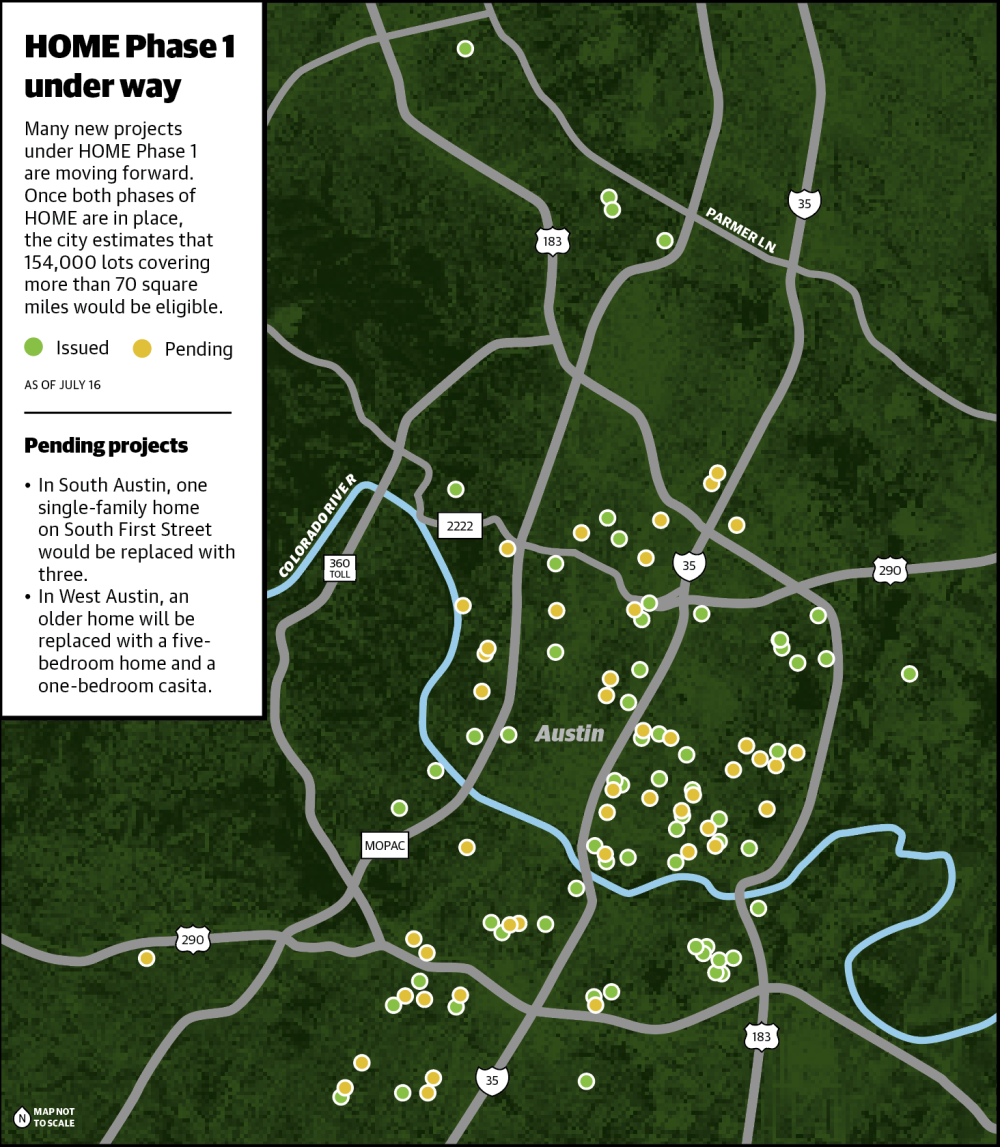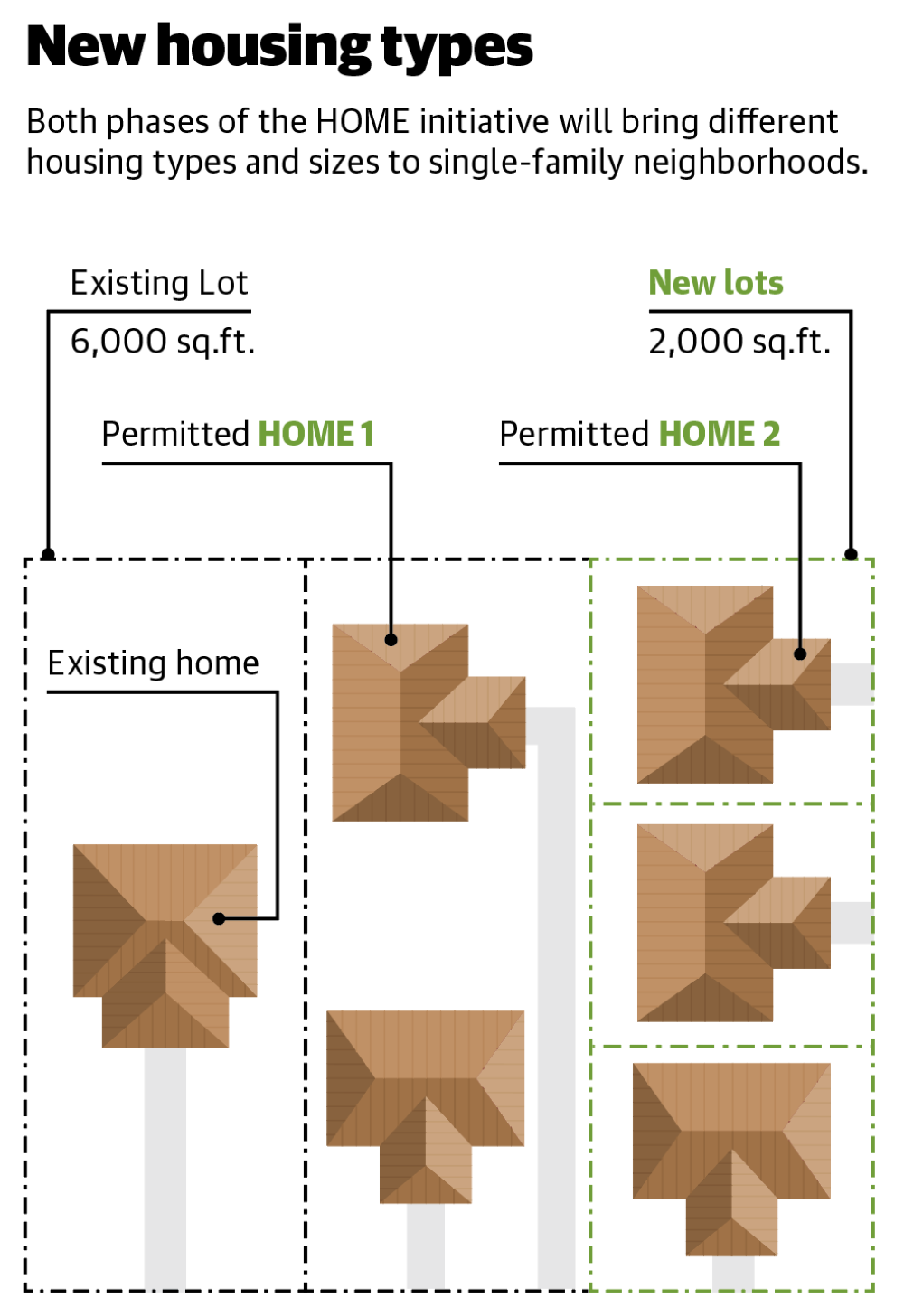HOME was approved by local officials who said they hope to see it bring more affordable and accessible housing types to a city where larger, costlier single-family homes have long been the norm. The controversial policy followed past unsuccessful attempts by City Hall to broadly revise Austin’s land development code.
HOME’s first stage allowed multiple housing units to be built on single-family-zoned property. By late 2024, the second phase will let single homes be built on much smaller footprints across Austin.
“This is a way to bring down our average price points, offer something in the neighborhood that doesn’t exist, and be selling to a broader range of people,” said homebuilder Thomas Joseph of Joseph Design Build.
What's happening?
Allowances under HOME unlock new housing options in Austin’s single-family-zoned areas where less flexible building rules used to apply.
The new options are now being considered by Austin property owners with scores of projects proposed since February, when the first phase went into effect.

The plan was generally aimed at increasing the density of housing on single-family plots, resulting in more housing like duplexes and accessory dwelling units, or ADUs.
“[HOME is] making for a better product. It’s three-bed, two-bath-type houses that have a more comfortable feel for homeowners,” said developer Cody Carr of Carr Residential.
Developer Gabe Joseph said HOME builds on the popularity of ADUs and smaller housing in costlier areas, a trend that can now scale out to more neighborhoods—although HOME will likely be most-used around Central Austin rather than farther out, where new additions would compete with larger homebuilders.
“Infill creates character,” he said. “You need to have massive growth, but I think you have to keep some sort of a central core that people want to be a part of. And this is what that looks like.”
Austin’s Development Services Department, or DSD, began accepting HOME Phase 1 applications on Feb. 5. More than 100 permit requests had been filed as of mid-July.
It remains to be seen how widely HOME will be used, and whether it’ll have the intended effect of curbing home prices and helping first-time low- and middle-income buyers.
City Council required regular reporting on HOME to publicly track projects and their impacts in Austin. The first of those reviews is expected in August.
Put in perspective
Different parts of town are likely to see varying impacts from HOME. For example, core neighborhoods and places near major roads or bus routes could see more of the new additions that will take advantage of new housing caps.
“I think you’ll primarily see HOME [Phase] 1 three-unit projects in more walkable urban settings where it naturally is calling for density because you have transit nearby, stores nearby, people want to live there, live near the parks and near the water,” Carr said. “[New housing will] look very similar; just in instances where there are larger lots, you might have an additional unit where you otherwise wouldn’t. But I don’t think it’s as dramatic of a change as maybe people had originally believed.”
DSD staff say HOME hasn’t altered their oversight work so far with permit turnaround times still lasting about two weeks. They also advised residents or homebuilders to schedule meetings with the city before moving a HOME project forward.

What else?
One item of interest for many residents was whether new HOME projects would flood the market with even more unregulated short-term rentals, or STRs, like Airbnb and Vrbo.
For multi-unit homes created under Phase 1 allowances, one of those units can serve as an STR for 30 days a year. For housing created under Phase 2’s lower lot sizes, all STRs are banned—until April, or an STR overhaul officials are planning for later this year.
Another concern was HOME’s impact on private legal agreements, like deed restrictions that can limit properties to single-family builds. Those trump Austin policies like HOME—although any violations must be enforced privately, rather than by the city.
To make HOME usable for more residents, new city support like down payment assistance, lower building fees and low-interest loans will be considered by the fall.
What's next
The city is now preparing for the Phase 2 lot size reform. The city will start reviewing any such projects starting mid-August, and DSD spokesperson Stephanie Sanchez said staff training and other work is underway to “ensure a smooth implementation.”
HOME Phase 2 goes into effect Aug. 16, but will be delayed until November for much of the city. More information and maps of affected areas is available here.
City officials also mandated the study of an “equity overlay” that could limit HOME’s impact in places found to be hit hardest by gentrification and unaffordability. The Planning Department is working on that proposal on an undetermined timeline.
“Staff is currently studying the feasibility, merits and risks of an equity overlay by reviewing community proposals, previous city proposals, and peer cities,” said spokesperson Caleb Pritchard.





